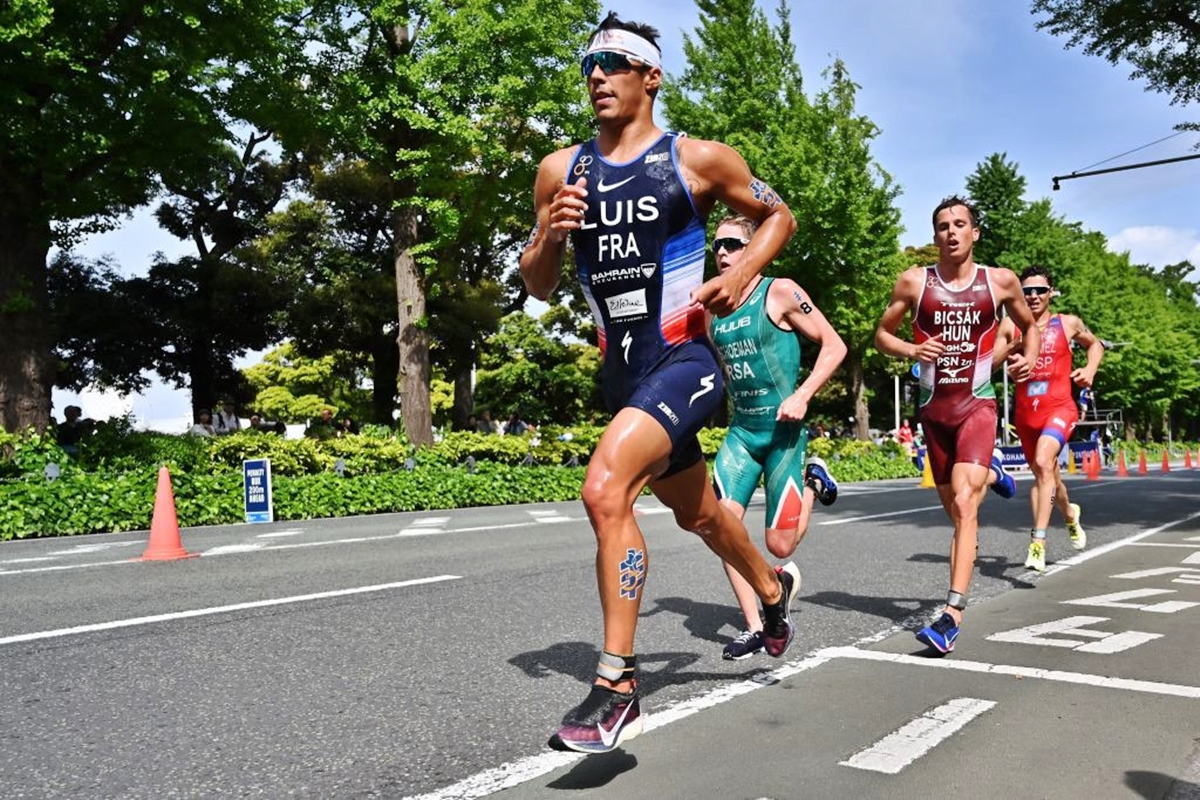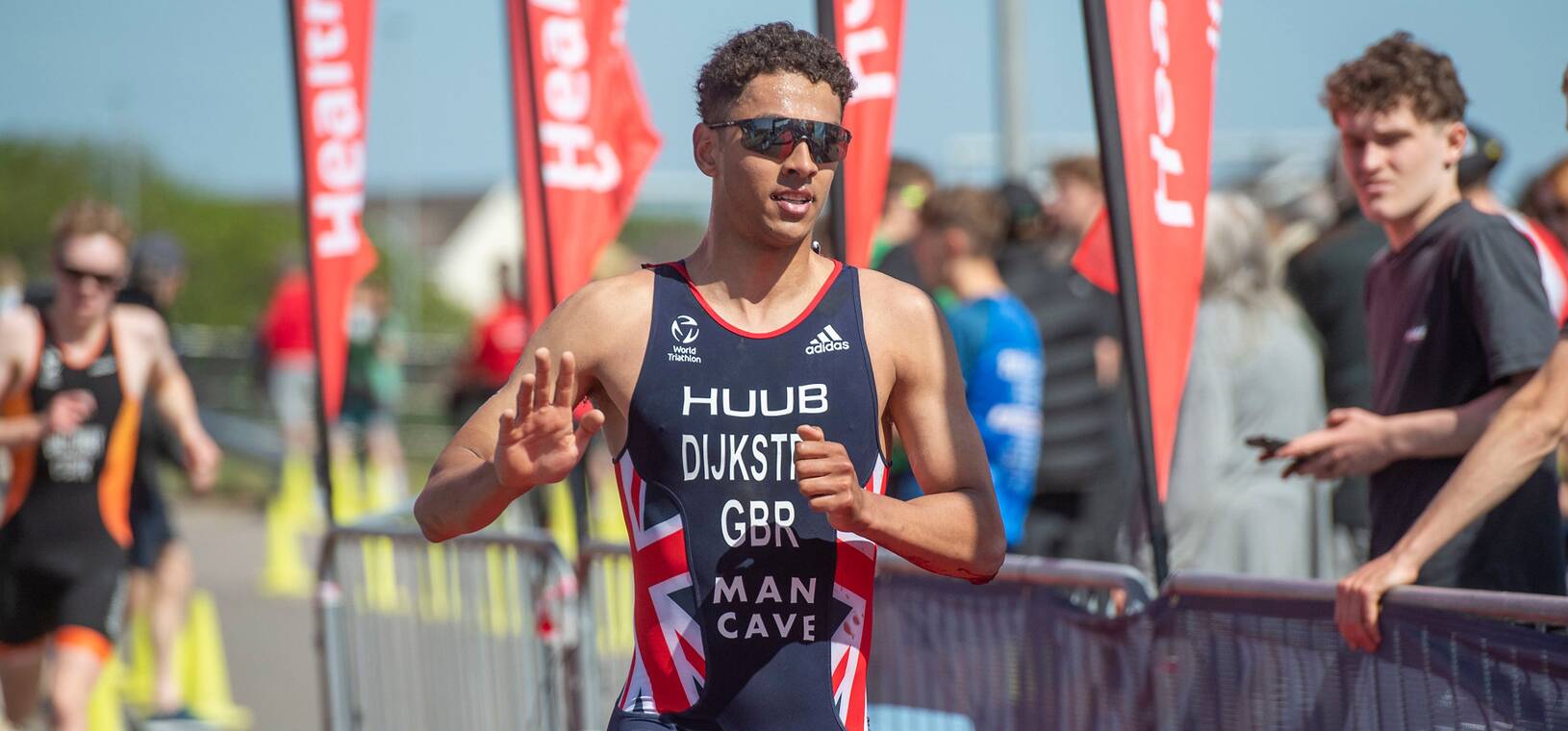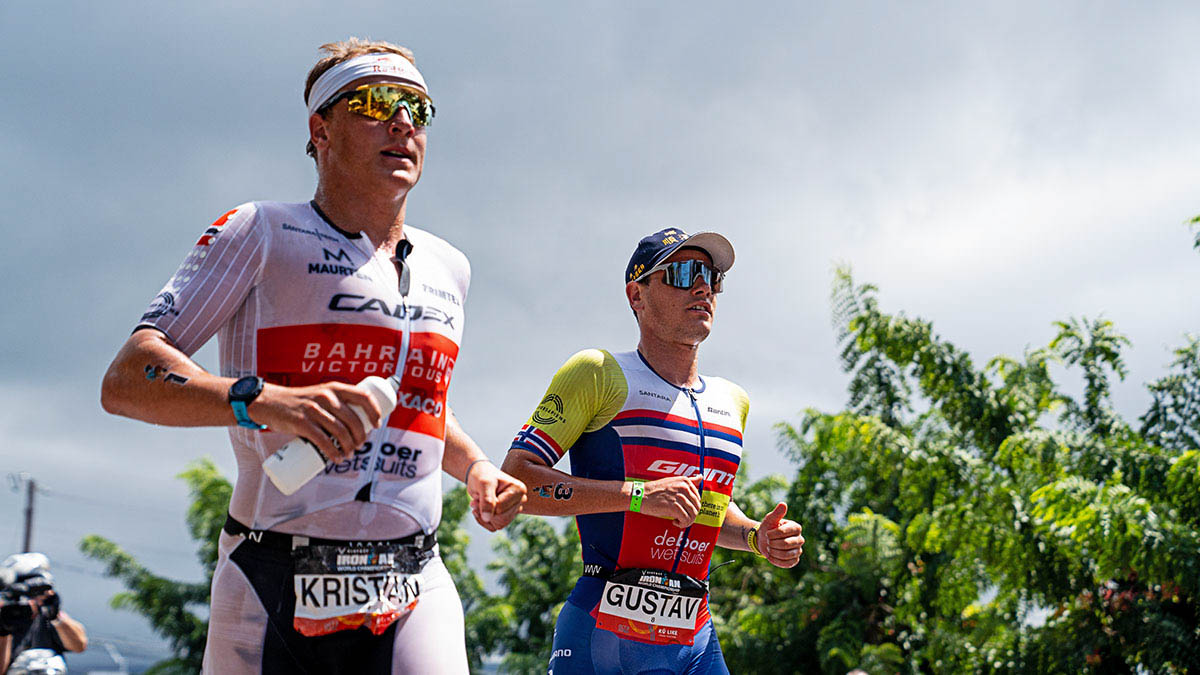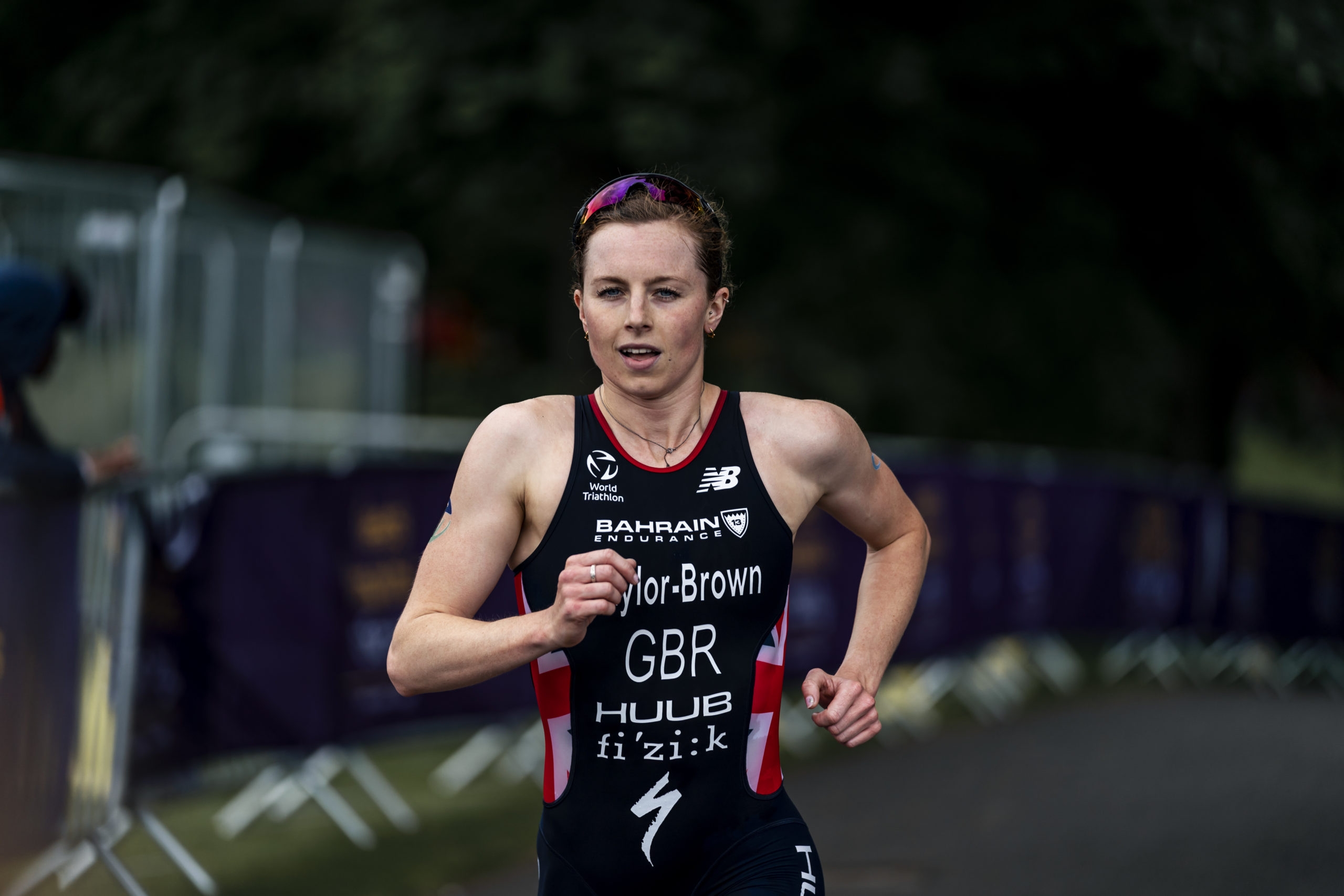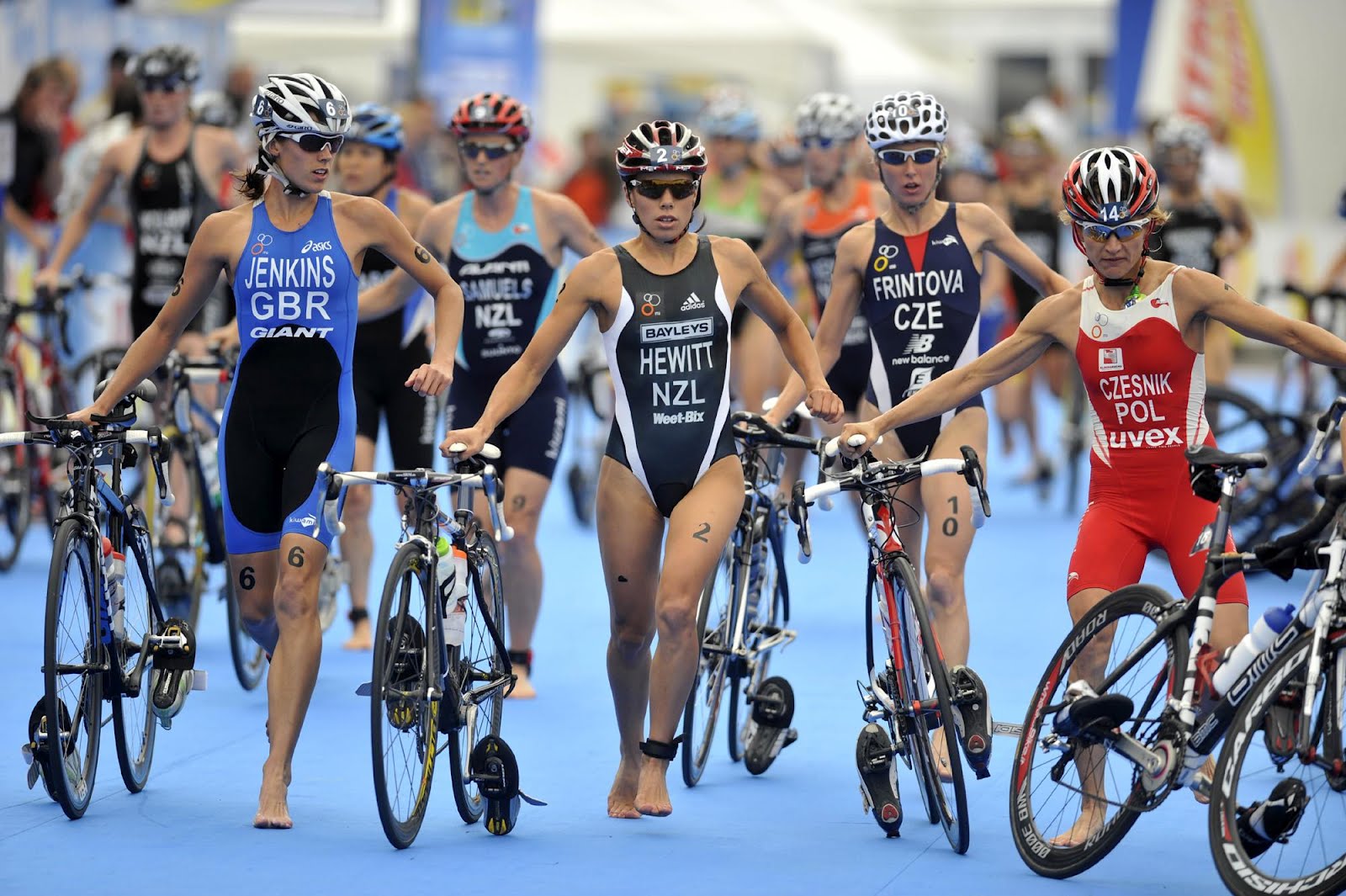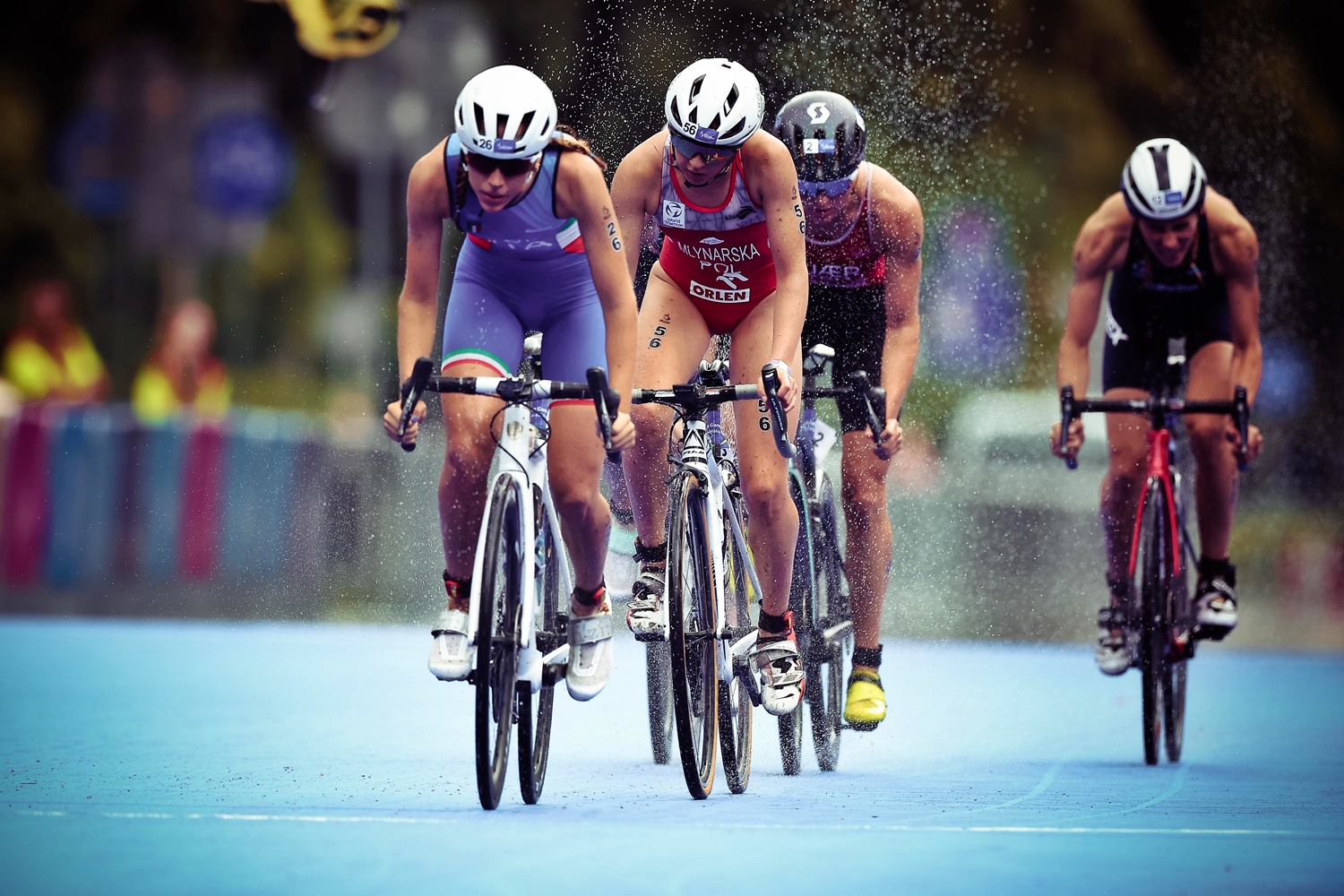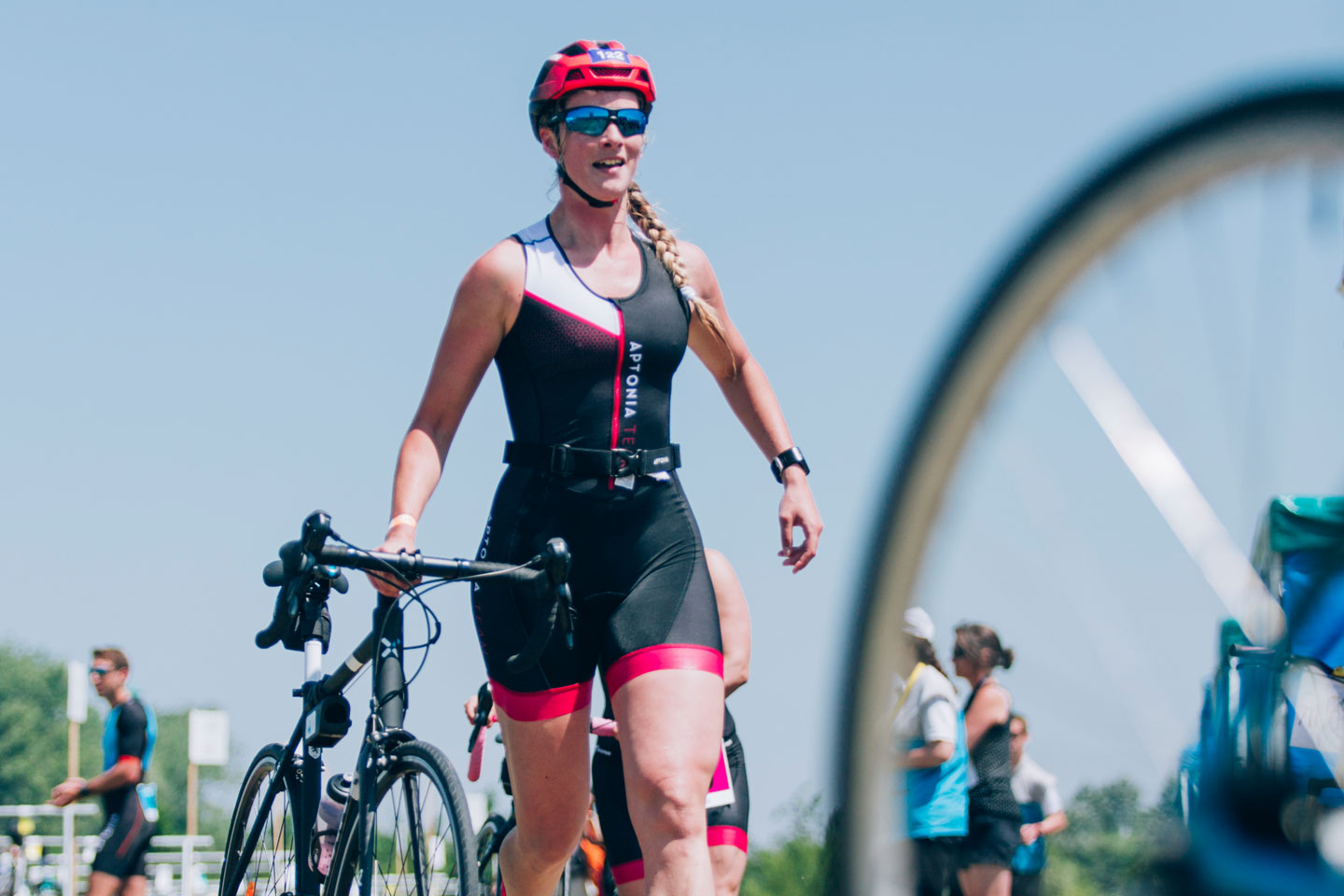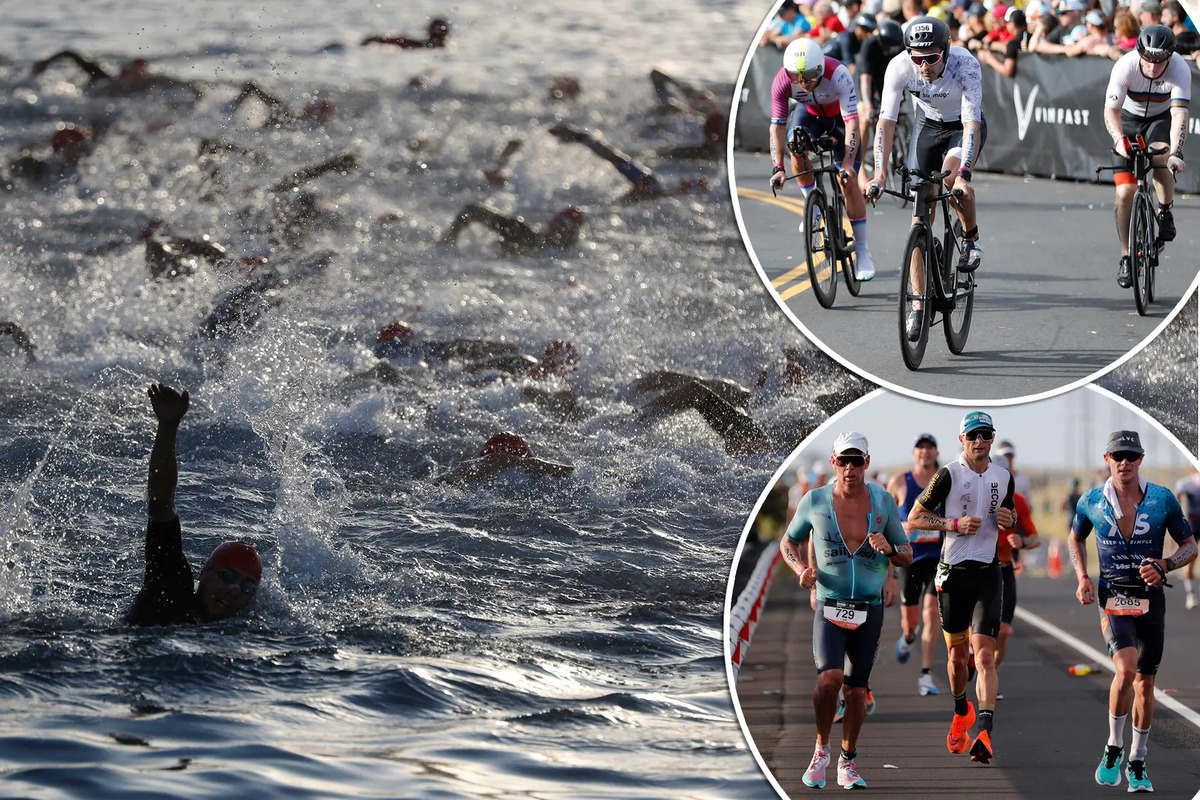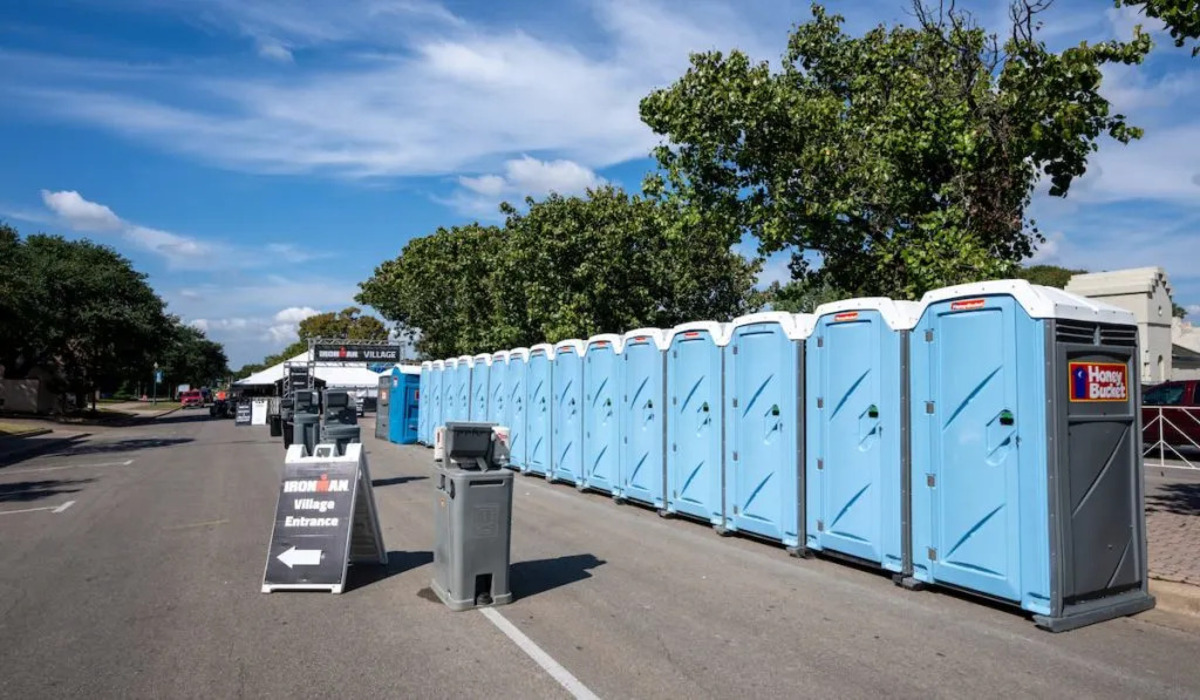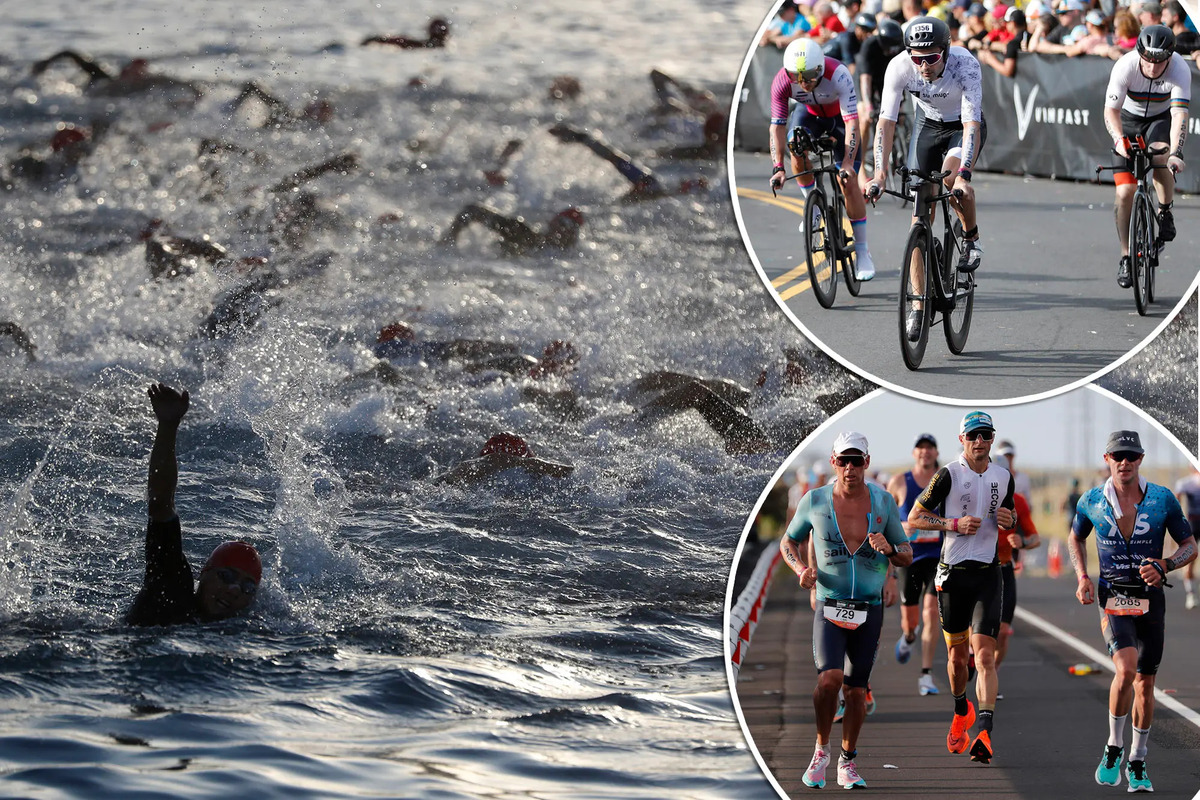

Featured
What To Do Day Before Triathlon
Modified: January 2, 2024
Get ready for your triathlon with these featured tips and activities to help you make the most of the day before the race. Don't miss out on essential preparations and last-minute strategies for a successful event!
Introduction
Preparing for a triathlon is an exciting and challenging journey that requires dedication, discipline, and careful planning. As the race day approaches, it is crucial to make the most of the day before the event to ensure you are physically and mentally prepared. This article will guide you through a comprehensive checklist of what to do the day before a triathlon, helping you optimize your performance and increase your chances of success.
While each athlete has their own unique routine and preferences, there are some key strategies and tasks that can benefit every participant. By following these guidelines, you will be able to fine-tune your preparation, leaving no stone unturned and giving yourself the best possible chance of achieving your goals on race day.
In the following sections, we will explore essential aspects of preparing for a triathlon the day before the event, ranging from organizing your gear and finalizing your nutrition plan to focusing on rest, recovery, and mental preparation. We will also discuss the importance of double-checking race details, visualizing the race course, and packing essential items. Lastly, we will discuss the significance of getting a good night’s sleep to ensure you wake up refreshed and ready to tackle the challenges that lie ahead.
Whether you are a seasoned triathlete or participating in your first event, the information shared in this article will help you optimize your performance, minimize last-minute stress, and set yourself up for success on race day. So, let’s dive in and explore the key steps to take the day before your triathlon.
Preparing Your Gear
One of the most crucial aspects of triathlon preparation is ensuring that your gear is ready and organized. The day before the race is the perfect time to double-check everything, ensuring that you have all the essentials and that everything is in proper working order.
Start by laying out all the gear you will need for each leg of the triathlon: swimming, cycling, and running. This includes your wetsuit, goggles, swim cap, triathlon suit or swimwear, helmet, cycling shoes, running shoes, socks, sunglasses, and any other specific equipment required for your race.
Inspect your gear carefully, checking for any signs of wear and tear. Make sure your bike is in good condition, with properly inflated tires, functioning brakes, and a lubricated chain. Check that all the necessary accessories such as your bike computer or GPS, water bottle holders, and bike repair kit are securely attached.
Compile a checklist of all the gear you need and tick each item off as you gather them. This ensures that nothing is missed and gives you peace of mind knowing that you have everything ready to go on race day. It is also helpful to pack everything in a designated triathlon bag or transition bag, which will make it easier to transport and keep your gear organized.
In addition to your primary gear, don’t forget to have your race bib number, timing chip, and any required identification readily accessible. Attach your race number to your triathlon suit or secure it to your race belt, so it is clearly visible during the competition.
Lastly, consider the weather conditions expected on race day and pack any necessary clothing or accessories accordingly. If it’s going to be sunny, apply sunscreen and bring a visor or a cap to protect yourself from the sun. If rain is forecasted, pack a rain jacket and extra clothes to keep you warm and dry before and after the race.
By taking the time to organize and prepare your gear the day before the triathlon, you will minimize stress and ensure that you have everything you need on race day. Being well-equipped and organized allows you to focus on the competition itself, giving yourself the best chance of performing at your peak.
Finalizing Your Nutrition Plan
Nutrition plays a vital role in your performance during a triathlon. The day before the race is the perfect time to finalize your nutrition plan and ensure that your body is properly fueled for the demands of the competition.
Start by reviewing the basics of sports nutrition. Aim to consume a balanced diet consisting of carbohydrates, proteins, and healthy fats. Carbohydrates provide the primary source of fuel for endurance activities, so it’s essential to focus on consuming complex carbohydrates such as whole grains, fruits, and vegetables. Proteins aid in muscle repair and recovery, while healthy fats provide long-lasting energy.
Plan your meals and snacks strategically, keeping in mind the timing of your race the next day. Be mindful of portion sizes and avoid overeating or trying any new foods that your body is not accustomed to. Stick to familiar, easily digestible meals that you know work well for you.
In the hours leading up to the triathlon, aim to consume a carbohydrate-rich meal to top up your glycogen stores. This could include foods like pasta, rice, potatoes, or bread. Pair this with a moderate amount of lean protein and some vegetables for a well-rounded meal.
Additionally, focus on staying hydrated throughout the day. Drink plenty of water and consider consuming electrolyte-rich fluids such as sports drinks or coconut water to replenish sodium and potassium levels. Avoid excessive caffeine and alcoholic beverages that can dehydrate your body.
Don’t forget to plan your pre-race breakfast. Aim to have a light meal that provides a good balance of carbohydrates and proteins. This could include options like oatmeal with a topping of fruits and nuts, a bagel with peanut butter, or a protein smoothie. Be sure to consume this meal at least two to three hours before the race to allow for proper digestion.
Lastly, remember to have some small, easily digestible snacks on hand to consume during your race. Energy gels, energy bars, or dried fruits can provide a quick source of carbohydrates and energy when you need it most. Experiment with different snacks during your training to find what works best for you.
By finalizing your nutrition plan the day before the triathlon, you set yourself up for success. A well-planned and balanced diet will fuel your body properly, providing the energy and nutrients needed to perform at your best and optimize your race day experience.
Hydration Strategies
Hydration is a key factor in optimizing performance and preventing dehydration during a triathlon. Proper hydration strategies should be implemented not only on race day but also in the days leading up to the event. The day before the race is crucial for ensuring that your body is well-hydrated and ready to tackle the challenges ahead.
Start by assessing your current hydration levels. Pay attention to your urine color throughout the day and aim for a pale yellow color, indicating adequate hydration. If your urine is dark or concentrated, increase your fluid intake.
On the day before the triathlon, drink plenty of water and focus on consuming fluids that contain electrolytes. Electrolytes, such as sodium, potassium, and magnesium, play a vital role in maintaining fluid balance and supporting muscle function.
Carry a water bottle with you throughout the day and sip on it regularly, ensuring that you’re constantly hydrated. Avoid excessive caffeine and sugary drinks, as they can dehydrate your body.
In addition to water, consider consuming sports drinks or electrolyte-enhanced beverages to replenish essential electrolytes. These can help prevent cramping and maintain optimal hydration levels.
Take note of the weather conditions forecasted for race day. If it’s expected to be hot and humid, you may need to increase your fluid intake. Pre-hydrate by drinking fluids with electrolytes, and continue to hydrate during the race, sipping on your water bottle and taking advantage of aid stations that offer hydration options.
Remember that hydration needs vary from person to person, so it’s crucial to listen to your body. Develop a strategy that works for you by practicing your hydration plan during training sessions and long-distance workouts.
Lastly, don’t wait until you feel thirsty to start hydrating. Thirst is a late indicator of dehydration, and it’s best to stay ahead of it by maintaining a constant intake of fluids.
By prioritizing hydration strategies the day before the triathlon, you set yourself up for optimal performance. Proper hydration will help regulate your body temperature, support muscle function, and keep you focused and energized during the race.
Rest and Recovery
Rest and recovery are essential components of any athlete’s training plan, and they become even more vital the day before a triathlon. Proper rest allows your body to repair, recharge, and be in peak condition for race day.
First and foremost, prioritize getting enough sleep the night before the triathlon. Aim for a full night’s sleep of around seven to nine hours. Prepare your sleeping environment to be cool, dark, and free from distractions. Establishing a consistent pre-bedtime routine can also help signal to your body that it’s time to rest.
In addition to sleeping well, take the opportunity to incorporate light stretching or a gentle yoga session into your day. This can help loosen tight muscles, improve flexibility, and promote relaxation. Avoid intense workouts or activities that may cause excessive fatigue or leave you feeling sore on race day.
While it’s important to remain active the day before the triathlon to keep your muscles engaged, it’s equally vital to avoid overexertion. Engage in light activities such as easy jogging, swimming, or cycling to maintain a sense of physical readiness while allowing your body to recover.
Consider incorporating active recovery techniques such as foam rolling or massage to alleviate muscle soreness and improve blood circulation. These techniques can help to relax and prepare your muscles for the upcoming race.
Mental rest is equally important as physical rest. Take time to engage in activities that help you relax and promote mental calmness. This could include reading a book, listening to soothing music, practicing meditation or deep breathing exercises, or spending time in nature.
Avoid unnecessary stressors, and try to maintain a positive mindset. Visualize yourself successfully completing the triathlon and embrace a sense of gratitude for the opportunity to participate.
Remember, rest and recovery are as much a part of the triathlon training process as the hard workouts and intense preparation. Embrace this time as an opportunity to recharge and rejuvenate your body and mind for the upcoming challenge.
Mental Preparation
Mental preparation is a crucial aspect of triathlon training that can significantly impact your performance on race day. The day before the triathlon is the perfect time to focus on your mental game and ensure that you are in the right mindset for success.
Start by visualizing yourself successfully completing the race. Close your eyes and mentally rehearse each leg of the triathlon, picturing yourself swimming with ease, cycling with power and control, and running with confidence and determination. Visualize crossing the finish line and experiencing the sense of accomplishment.
Affirmations and positive self-talk can also be powerful tools in mental preparation. Repeat positive statements to yourself, such as, “I am strong and capable,” “I am prepared and ready,” and “I can overcome any challenge.” This kind of positive reinforcement can help boost your confidence and keep negative thoughts at bay.
Managing race day nerves and anxiety is another essential aspect of mental preparation. Acknowledge that it’s normal to feel nervous before a race, but find techniques that work for you to manage those nerves. Deep breathing exercises, meditation, or engaging in calming activities can help center your mind and alleviate anxiety.
Seek support from your support system, whether it’s friends, family, or fellow triathletes. Surround yourself with positive and encouraging individuals who can offer reassurance and inspiration. Having a strong support network can provide additional mental strength and motivation.
Setting realistic goals for the triathlon is also important for mental preparation. It’s great to have high aspirations, but ensure that your goals are realistic and achievable. This helps prevent unnecessary pressure and allows you to focus on enjoying the experience rather than solely on the outcome.
Finally, embrace a mindset of gratitude. Be grateful for the opportunity to participate in the triathlon and for all the hard work and preparation you have put in. This perspective shift can help maintain a positive mindset and foster a sense of appreciation for the entire race-day experience.
By engaging in effective mental preparation the day before the triathlon, you equip yourself with the mental fortitude and resilience necessary to overcome challenges and perform at your best. Embrace these techniques and strategies, and trust in your mental strength as you embark on your triathlon journey.
Double-Checking Race Details
Double-checking race details is a critical step in ensuring a smooth and successful triathlon experience. The day before the event, take the time to review and confirm all the essential race details to minimize any potential last-minute surprises.
Start by reviewing the race information provided by the organizers. Pay close attention to the race start time, wave assignments, and transition opening and closing times. Familiarize yourself with the course route, including any swim start instructions, bike course maps, and run course details. Take note of any special rules or regulations specific to the race.
Confirm the location of the race start and finish, as well as the location of the transition area. Plan your travel route to the race site, taking into account any potential traffic or road closures that may affect your journey. Consider arriving early to allow ample time for parking, check-in, and setting up your transition area.
Take a moment to assess the weather forecast for race day. This can help you make informed decisions about clothing choices and adapt your race strategy accordingly. If the weather is expected to be hot, consider adjusting your hydration plan and applying sunscreen. For cooler temperatures, make sure you have appropriate layers.
Ensure that all necessary equipment and gear are in proper working condition. Check your bike tires for optimal inflation, ensure that your helmet meets safety regulations, and confirm that your timing chip is functioning correctly. Prepare any additional equipment needed, such as swim caps and goggles.
Make a checklist of all the items you need to bring to the race, including your race bib, timing chip, ID, nutrition, gear, and clothing. Tick off each item as you pack it to avoid forgetting anything. Prepare a separate bag with post-race essentials, including a change of clothes, comfortable shoes, and recovery fuel.
Verify the availability of aid stations along the course and familiarize yourself with what they will provide. This will help you plan your race-day nutrition strategy and decide if you need to pack any additional fuel or hydration options.
Lastly, don’t forget to review the rules and guidelines for the triathlon. Familiarize yourself with any disqualification criteria, drafting rules, or specific penalties for infractions. This knowledge will ensure that you compete within the regulations and have a fair experience.
By double-checking all race details the day before the triathlon, you will go into the event feeling prepared, confident, and ready to tackle any challenges that may arise. This attention to detail allows you to focus on the race itself and maximize your performance on race day.
Visualizing the Race Course
Visualizing the race course is a powerful technique that can help you mentally prepare and familiarize yourself with the challenges that lie ahead. Taking the time to visualize the race course the day before the triathlon can enhance your performance and boost your confidence on race day.
Start by studying the race course map in detail. Familiarize yourself with the swim start, bike course, and run route. Take note of any significant landmarks, turns, or changes in elevation along the way. Mentally navigate through each leg of the race, visualizing yourself smoothly transitioning from one segment to another.
Imagine the swim portion, picturing yourself confidently navigating through the water. Visualize your swim strokes, sighting techniques, and maintaining a steady rhythm. Picture yourself exiting the water and smoothly transitioning into the next stage of the race.
Mentally go through the bike course, visualizing the terrain and anticipating any challenging sections or hills. Imagine yourself maintaining a steady pace, fluidly shifting gears, and taking strategic turns. Visualize staying strong and focused, pushing through any fatigue or mental barriers that may arise.
Move on to the run course, envisioning yourself in a strong and comfortable stride. Picture yourself pacing yourself throughout the run, maintaining a consistent rhythm, and leveraging mental strength to keep pushing forward. Visualize a strong finish as you cross the finish line with a sense of accomplishment.
While visualizing the race course, also imagine different scenarios and potential challenges you may encounter. Mentally prepare for unexpected situations such as equipment malfunctions, adverse weather conditions, or crowded sections of the course. Visualize yourself handling these situations calmly and adapting to them effectively.
Incorporate all your senses into the visualization process. Imagine the sounds of the crowd cheering, the feel of the water as you swim, the wind rushing by as you bike, and the sound of your footsteps on the run. Engaging your senses in the visualization process makes it more vivid and real, enhancing the mental preparation.
Visualization helps build confidence and instills a sense of familiarity with the race course. It creates neural pathways in your brain that mirror actual physical experiences, preparing your mind for the challenges ahead. The more vivid and detailed your visualization, the more effective it will be on race day.
By visualizing the race course, you mentally rehearse the race, improving your focus, concentration, and overall performance. On race day, you will feel more confident and prepared, allowing you to stay focused and overcome any obstacles that come your way.
Packing Essentials
Packing the right essentials is crucial to ensure a smooth and successful triathlon experience. The day before the race, take the time to gather and organize all the necessary items to alleviate any last-minute stress and ensure that you have everything you need on race day.
Start by referring to your gear checklist and gather all your race essentials. This includes your swim gear (wetsuit, goggles, swim cap), cycling gear (helmet, cycling shoes, sunglasses), and running gear (running shoes, socks, race belt). Check each item off your list as you pack them.
Don’t forget your race number and timing chip. Attach the race number to your triathlon suit or secure it on your race belt. Ensure that your timing chip is properly affixed or attached to your ankle, as per the race instructions.
Consider the weather conditions forecasted for race day. Pack appropriate clothing and accessories such as a swim cover-up, a lightweight jacket or arm warmers for cycling, and a hat or visor for running. Pack extra layers for post-race comfort, including a change of clothes and comfortable shoes.
Bring along your nutrition and hydration essentials. This includes your preferred energy gels, sports drinks, and snacks. If you have any specific dietary requirements or preferences, pack accordingly. Pack extra to account for any unforeseen circumstances or race delays.
Include a towel in your bag for drying off after the swim and for wiping any excess moisture during transitions. Additionally, pack some body glide or anti-chafing cream to prevent discomfort or irritation during the race.
Don’t forget to bring your personal care items, such as sunscreen, lip balm, and any necessary medications. Apply sunscreen generously before the race to protect your skin from the sun’s harmful rays. Pack a small first aid kit with essentials like band-aids and pain relievers, just in case.
Include any additional gear or accessories you may need, such as a bike pump, repair kit, spare tubes, or tools for minor bike adjustments. It’s better to be over-prepared than underprepared when it comes to your equipment.
Finally, pack a bag to keep all your essentials organized and easily accessible. Use a transition bag or a backpack with multiple compartments to help you stay organized during pre-race preparations and transitions.
By packing your essentials the day before the triathlon, you ensure that you have everything you need, minimize last-minute stress, and can focus on the race itself. Double-check your gear checklist, pack strategically, and organize your bag so that you can approach race day with confidence and ease.
Getting a Good Night’s Sleep
A good night’s sleep is crucial for optimal performance in a triathlon. The day before the event, it’s important to prioritize sleep to ensure that your body and mind are well-rested and ready for the challenges of race day.
Establish a bedtime routine that promotes relaxation and signals to your body that it’s time to wind down. This could include activities such as reading a book, taking a warm bath, or practicing deep breathing exercises. Avoid stimulating activities, bright screens, and caffeine in the evening, as they can interfere with your sleep.
Create a sleep-friendly environment that is cool, dark, and quiet. Use blackout curtains or an eye mask to block out any external light. Consider using earplugs or a white noise machine to mask any disruptive sounds that may interfere with your sleep.
Avoid consuming heavy or spicy meals close to bedtime, as they can cause discomfort or indigestion. Instead, opt for a light, balanced meal in the evening that includes complex carbohydrates, lean protein, and vegetables.
Avoid alcohol and limit fluid intake in the hours leading up to bedtime. While alcohol may initially make you feel sleepy, it can disrupt your sleep patterns and result in a less restful night’s sleep. However, ensure that you are adequately hydrated throughout the day and use the bathroom before going to bed.
Set a consistent sleep schedule and aim for seven to nine hours of uninterrupted sleep. Going to bed and waking up at the same time each day helps regulate your body’s internal clock and improves the quality of your sleep. Stick to your sleep routine even on weekends to maintain a healthy sleep pattern.
Consider using relaxation techniques to help you unwind and fall asleep faster. These can include progressive muscle relaxation, guided meditation, or listening to calming music or nature sounds. Experiment with different techniques to find what works best for you.
Avoid checking the clock if you wake up during the night, as this can create anxiety and disrupt your sleep further. Instead, practice relaxation techniques or engage in a calming activity until you feel drowsy again.
Keep in mind that everyone’s sleep needs may vary. Pay attention to how you feel in the morning and make adjustments to your sleep routine accordingly. If you consistently struggle with getting enough sleep, consider seeking advice from a sleep specialist.
By prioritizing a good night’s sleep the day before the triathlon, you give your body and mind the opportunity to recover, restore, and recharge. A well-rested state sets the foundation for optimal performance, focus, and overall enjoyment of the race day experience.
Final Thoughts
As you approach the day before your triathlon, it’s important to remember that preparation is key. Taking the time to organize your gear, finalize your nutrition plan, and focus on rest and recovery will greatly contribute to your performance on race day. Visualizing the race course, double-checking race details, and packing the necessary essentials will help minimize stress and ensure a smooth and successful experience.
Equally important is nurturing your mental state. Engaging in mental preparation, managing race day nerves, and cultivating a positive mindset will play a significant role in your performance and overall enjoyment of the triathlon.
Remember, each triathlon is a unique journey, and it’s important to embrace the process and celebrate your achievements along the way. Set realistic goals, appreciate the progress you’ve made in your training, and enjoy the camaraderie and excitement of the event.
On race day, trust in your preparation and training. Stay present and focused, listen to your body’s signals, and adapt to any unforeseen circumstances that may arise. Most importantly, savor the experience and have fun!
As you cross the finish line, reflect on your accomplishments and the commitment and dedication it took to get there. Cherish the memories created during the triathlon and let them serve as motivation for future endeavors.
While the day before the triathlon is critical for fine-tuning your preparation, it’s important to approach it with a sense of excitement and gratitude. This is your opportunity to showcase your hard work and dedication, and to fully embrace the multisport lifestyle.
So take a deep breath, trust in your training, and enjoy every moment of the day before the triathlon. You’re about to embark on a remarkable journey that will test your physical and mental limits, push you to new heights, and leave you with a deep sense of accomplishment. Best of luck on your triathlon adventure!
